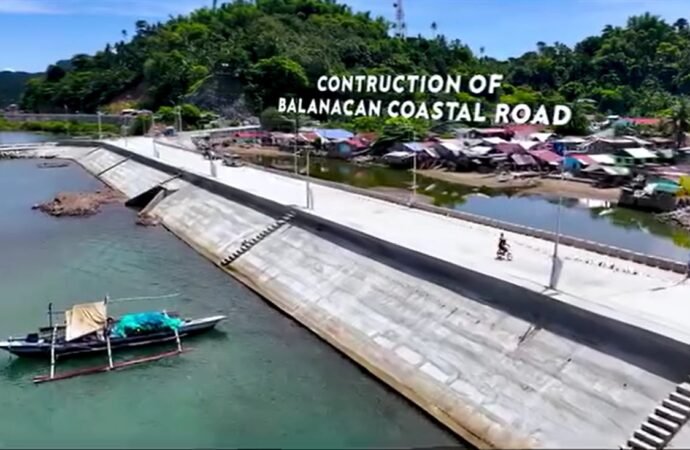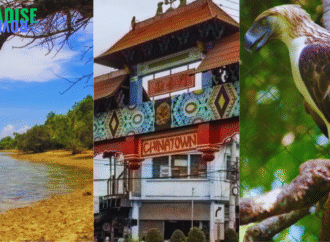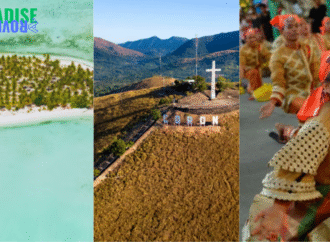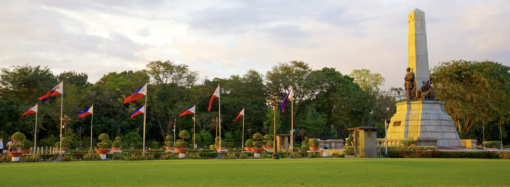MOGPOG, MARINDUQUE — More than 40 households in Barangay Balanacan, Mogpog are now better protected from coastal hazards following the completion of the Balanacan Coastal Road project, implemented by the Department of Public Works and Highways (DPWH) Marinduque District Engineering Office (DEO). The infrastructure project, officially reported by District Engineer Richard Emmanuel P. Ragragio to
MOGPOG, MARINDUQUE — More than 40 households in Barangay Balanacan, Mogpog are now better protected from coastal hazards following the completion of the Balanacan Coastal Road project, implemented by the Department of Public Works and Highways (DPWH) Marinduque District Engineering Office (DEO).
The infrastructure project, officially reported by District Engineer Richard Emmanuel P. Ragragio to DPWH MIMAROPA Regional Director Gerald A. Pacanan, CESO III, is part of the government’s continuing efforts to strengthen coastal resiliency in vulnerable areas. The new road, which spans 183.00 linear meters, features a reinforced concrete pavement with 9.0-meter z-type steel sheet piles and geotubes designed to buffer strong wave action. The construction also includes a concrete shoulder on both sides, a single-barrel reinforced concrete box culvert (RCBC), 12 solar-powered streetlights, and pavement markings for added safety and visibility.
The Balanacan Coastal Road is seen as a vital investment in climate resilience, especially as typhoons and other extreme weather conditions grow more frequent and intense due to climate change. Prior to the project, residents of the coastal barangay regularly experienced distress from high wave surges during inclement weather. These wave surges often led to the destruction of homes and disrupted the livelihood of fisherfolk, whose income depends on calm coastal conditions and access to the sea.
With the new coastal road in place, local communities now benefit from enhanced protection against these natural hazards. The elevated and fortified road structure reduces the direct impact of waves on residential properties and offers an alternative, safer space to dock and secure fishing boats during storms.
“This project is more than just a road—it is a lifeline for coastal families whose daily lives are heavily impacted by the sea,” said Engineer Ragragio. “Aside from ensuring safer communities, it also facilitates smoother transport access, allowing fisherfolk and residents to move goods and navigate the area even during adverse conditions.”
The initiative is aligned with the Build Better More Program and supports the Philippines’ commitment to the National Climate Change Action Plan, particularly on climate resiliency and disaster risk reduction. It is also expected to contribute to the local economy by ensuring more stable conditions for the fishing sector and creating a more accessible route for transport and trade within the municipality.
Local residents have welcomed the development, noting significant improvements in safety and accessibility. “Before, it was dangerous to walk along the coast during storms, and our boats were always at risk of being damaged,” said one resident. “Now, we feel safer, and we have a proper road to use even during bad weather.”
The Balanacan Coastal Road project also reflects DPWH’s ongoing commitment to building sustainable and inclusive infrastructure, especially in geographically isolated and disadvantaged areas like Marinduque. As the island province continues to enhance its disaster-preparedness strategies, such projects are crucial in safeguarding lives, livelihoods, and local development gains.
For future infrastructure developments, DPWH Marinduque DEO continues to coordinate with local government units and barangay leaders to identify other critical areas vulnerable to storm surges and erosion.












Leave a Comment
Your email address will not be published. Required fields are marked with *